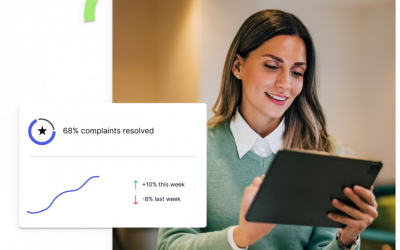Analytics play a key role in every industry today. Even in one’s personal life, there are numerous requirements to collate and analyze data. For example, when you want to invest your money in the stock market, you will come face to face with different kinds of data and various analytics tools. Leveraging all this data in the optimum way and interpreting it correctly is crucial because it forms the basis of your investment decisions. But rarely do new investors enter uncharted waters alone. They seek the advice of an experienced financial advisor to help interpret the data from which they can then collectively base wise investment decisions. For a business just starting their workforce analytics initiative, comprehensive data gathering as well as accurate interpretation plays a key role in ensuring it will produce the intelligence needed to make sound workforce decisions.
Today, thanks to advancements in technology, there are several tools at hand that help collect and organize workforce data quickly and effortlessly. But, data collection is just the first step. Interpreting the data and making use of it intelligently is the most challenging part where mistakes can prove to be very costly indeed. Do you think it’s wise for your business to enter these unchartered waters alone?
Advanced workforce analytics solutions deliver complex results
Technology has made it easy to collect vast amounts of minute and difficult to interpret data which has prompted businesses to increasingly use such tools to gather the complex numbers and data points. These tools can also assemble the data in a logical manner and present it to you in various reports. However, one thing to keep in mind is that no matter how well organized such data may be, it is still a substantial challenge to understand the results, learn what they mean and implement the findings.
The simple concept of mean, median and mode are understandable to the average business person. You can use simple tools to collect these statistics and yield the results which can then be easily utilized to fine tune your decision making.
However, understanding the true significance of complex data and applying the results of workforce analytics becomes a far more complex task when you are looking at data that is, in itself, rather complex. This may be the case with the numbers yielded by a correlation and regression analysis, the R values, the F score and the Degrees of Freedom. A mistake in understanding exactly what this data represents and a mismatched application of the findings can both result in disastrous mistakes.
The need for expertise to analyze data accurately
A business that has an experienced data scientist on staff has an advantage since he/she can provide the insight needed to clear the waters and interpret the results correctly. A data scientist may even establish or recommend standardized solutions that can help interpret these results accurately time after time. But what happens when you do not have such a qualified person by your side? One option is to seek the knowledge and skills to interpret the results yourself.
Training helps you understand the true value of analytics
Even the most basic training on statistics can play a key role in helping you understand the way in which workforce data is gathered and how statistical results are used to determine patterns and relationships in the data. This insight is very valuable because it tells you how significant each conclusion is and whether or not it is truly relevant in your specific situation. It gives you clarity about the degree to which you should base your decisions upon different hypotheses. Basic training can give you a clear picture of how each hypothesis uses basic principles and concludes that a specific relationship exists based on the information gathered and analyzed.
Third party experts can also fill the void
A second and often more expedient solution is to partner with a firm or specialist that has the prerequisite knowledge to be your hands-on data scientist. Many firms specialize in workforce analytics and not only bring the experience but also the tools needed to collect, analyze, and report the results to you in easy to understand format.
Consider your options based on your timeline. The right partner could act as a trainer for you and your team. What’s most important is that you have a trained resource to help you interpret the complex results that can ultimately change your business for the better.




